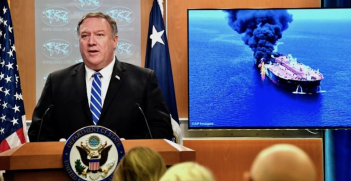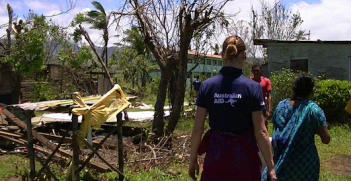The New Multilateral Development Banks
![BRICS leaaders in 2014. Photo credit: By Roberto Stuckert Filho [CC BY 3.0 br (http://creativecommons.org/licenses/by/3.0/br/deed.en)], via Wikimedia Commons BRICS leaaders in 2014. Photo credit: By Roberto Stuckert Filho [CC BY 3.0 br (http://creativecommons.org/licenses/by/3.0/br/deed.en)], via Wikimedia Commons](http://20.185.176.227/wp-content/uploads/2016/07/brics.jpg)
The newly established Asian Infrastructure Investment Bank and the New Development Bank remain focused on debt-based financing and an understanding of development similar to their North-led equivalents but they are led by emerging countries. It remains to be seen whether they will reshape the landscape of global governance.
Between April and June 2016, the Asian Infrastructure Investment Bank (AIIB) and the New Development Bank (NDB)—the two most recently established multilateral development banks (MDBs)—approved their first loans. With these, it is possible to start to answer whether the newest MDBs are following the path laid by the global North-led MDBs or whether they are setting new foundations.
The AIIB is led by China and has 57 prospective founding members (46 ratifications as of 12 July 2016). Its mandate is to fund infrastructure and other related productive sectors in Asia. The NDB is led by the BRICS (Brazil, Russia, India, China and South Africa) and was conceived to support infrastructure and sustainable development projects. The articles of agreement of both are simply adapted from older MDBs with a few changes. This tells us a lot about the organisations already, but it is worth looking a little deeper.
Asian Infrastructure Investment Bank
Launched in October 2013, the AIIB’s Articles of Agreement came into force on 25 December 2015. The AIIB already has an expansive vision with plans announced for growth of membership and the establishment of a project preparation special fund to assist low and middle income countries in project preparation. Funded by a US$50 million grant from China, this may help the AIIB compete with other MDBs for loans to low income countries, despite not having a highly concessional lending arm.
As Malcolm Cook has pointed out, the AIIB’s membership encapsulates China’s “East-West continental understanding of Asia” with strong representation from the Middle East. This contrasts to the region’s older Japanese-led MDB, the Asian Development Bank (ADB), which has 14 Pacific Island states as members that are not members of the AIIB. This reflects what Cook describes as Japan’s “North-South maritime understanding of Asia”. The US and Japan continue to indicate they will not join the AIIB. The Philippines and Thailand have deferred signing and reportedly Malaysia and Singapore did not subscribe to their full shares.
To alleviate suspicions from other states about Chinese domination, concerns about lack of safeguard policies and to gain the support of money markets, the AIIB has entered into partnership with existing MDBs. The AIIB has signed a co-financing agreement with the World Bank, memorandums of understanding with the ADB and European Bank for Reconstruction and Development (EBRD) and a framework of cooperation with the European Investment Bank.
On 24 June 2016, the board approved its first four loan projects totalling US$509 million. These are: a power distribution system upgrade and expansion project in Bangladesh (US$165 million); a national slum upgrading project in Indonesia (US$216.5 million) to be co-financed with the World Bank; the Shorkot-Khanewal section of national motorway M-4 in Pakistan (US$100 million), co-financed with the ADB and the UK’s Department for International Development; and the Dushanbe-Uzbekistan border road improvement project in Tajikistan (US$27.5 million), co-financed with EBRD.
The AIIB is balancing its messages to different groups with this selection. The three co-financed projects say to critics that safeguard standards have been met and say to financial markets that capacity to repay and returns on investment are solid. For critics focused on poverty reduction there is a slum upgrading project, and for markets there are road and power projects. For regional supporters, there are two continental projects linking to China’s Silk Road plan but also a project in South Asia and one in Southeast Asia, projecting an expansive view of China’s support for the region.
New Development Bank
Proposed in 2013, the NDB’s Articles of Agreement entered into force in July 2015. The institution has been high on rhetoric, with President KV Kamath contending that “the setting up of the NDB, in a way, is a coming of age of the countries of the South.” The NDB reflects the shared national interests of the BRICS: to exercise regional and global leadership and to promote development finance opportunities for their own countries.
There are only five member countries in the NDB: the BRICS countries, each with an equal number of shares and voting rights. Vice President Leslie Maasdorp stated in July 2016 that membership will be open to other countries in the next few years, meaning that a broader pool of countries could more readily receive its loans.
The NDB approved its first four loans in April 2016: renewable energy projects to Brazil (US$300 million), India (US$250 million), China (US$81 million) and South Africa (US$180 million). It is notable that national banks and companies are executing the loans. This likely reflects the limited capacity of the NDB but is a point of difference with traditional MDBs. The Brazilian National Development Bank (BNDES) and the Canara Bank in India received loans in support of solar power projects. For China, Shanghai Lingang Hongbo New Energy Development Company obtained a loan to finance a rooftop solar power project and public utility Eskom received the South African loan for electrical infrastructure upgrades and improving power lines compatible with renewable energy sources. Absent of policy conditions, the loans show the importance of green energy to most of the BRICS and also proclaim them as leaders in this field.
The relatively small size of the loan to China highlights its problems with over-investment in infrastructure and the lack of a Russian loan in the first tranche likely reflects Rlimited interest in renewables. The NDB is negotiating with Russia to finance a large-scale project in road construction. It is expected that the institution will approve upwards of US$3 billion in projects in 2017, which is very ambitious. It is raising money in the BRICS with 3 billion renminbi (US$449 million) of five-year green bonds already sold in China and plans to raise funds in Russian capital markets by the end of the year. This contrasts to traditional MDBs, which were slow to venture into non-traditional capital markets.
Old wine, new bottles?
This year has revealed quite a bit about the two new MDBs on the block. The AIIB is the more conservative of the two, closely resembling the older MDBs and not attempting reform of development financing practices. Yet it holds greater potential given its robust membership base, larger pay in capital, strong partnerships with other MDBs and no-frills approach. The NDB is more ambitious, both in rhetoric and in its self-styled purpose of fostering cooperation in the South. Yet its limited country membership will hinder its impact, at least in the short-term.
The new MDBs represent both a continuation of and a break from the status quo. They remain focused on debt-based financing and development understandings similar to the North-led MDBs but represent a break in being led by emerging countries. While it is too early to say whether they will reshape the landscape of global governance, they point to a strong continuity with Northern donors on moving international development away from aid and further toward debt-based development financing.
Dr Adrian Bazbauers recently completed his PhD at the Australian National University and is a sessional lecturer at the University of Canberra. Dr Susan Engel is a senior lecturer in Politics & International Studies at the University of Wollongong. This article is published under a Creative Commons Licence and may be republished with attribution.





